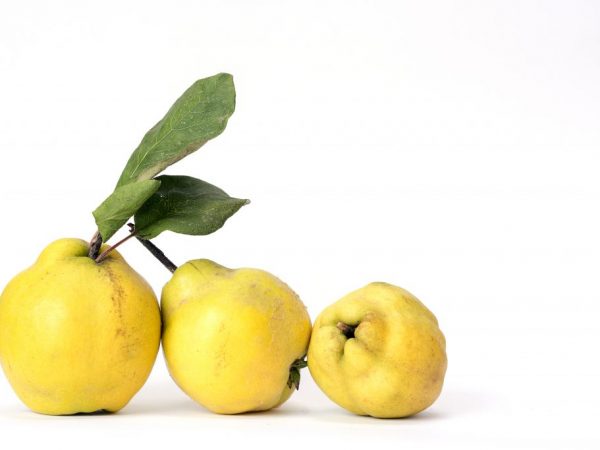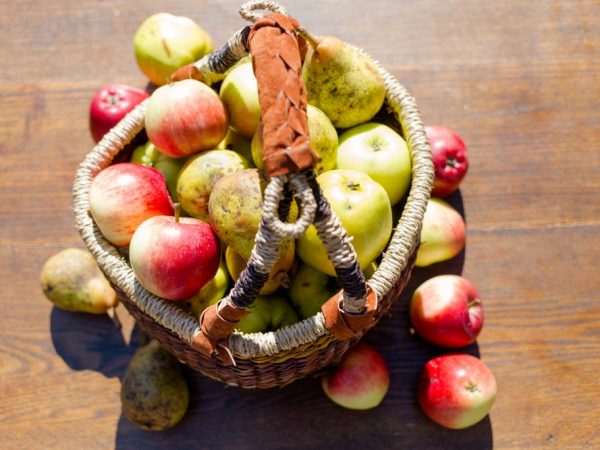Description of Carmen pear
Pear Carmen is characterized by its beautiful bright fruits that attract attention. To grow high quality products, you must follow all the intricacies of agricultural technology and care.

Description of Carmen pear
Variety characteristic
The Carmen pear variety was bred by crossing the Red Williams and Blank Favorite varieties.
It is ideal for cultivation in the Central and Southern regions of the country. There are high yields in central Russia. The variety belongs to summer varieties that ripen early. The growing season is 110 days from the moment of flowering. Harvesting is carried out in early September.
Pear appearance
According to the description, the tree reaches a height of 4 m. It has a wide pyramidal crown:
- medium-sized fruit, small pear-shaped;
- the weight of one fruit is 120-160 g;
- the peel is dry, red in color;
- the peduncle is short but dense;
- there are many spotty blotches on the peel;
- good transportability;
- yield indicators - about 60 kg of selected products from 1 tree.
Taste qualities
When cut, the pulp is characterized by a pleasant creamy shade and high juiciness. The aroma is intense. ... Sweet taste predominates, with no bitterness or acidity. Astringency is not observed.
The Carmen pear variety is suitable for universal use. Delicious fresh fruit salads are prepared from the products, they are used for preservation for the winter: they prepare compote, jam or preserves.
Features of planting and growing

The pear is planted on the sunny side
For the cultivation of this variety, only well-lit nutrient soils with a high drainage system are chosen. If moisture stagnates in the ground, this will lead to the death of the plant.
Planting is carried out in October or early May.
To begin with, choose a quality seedling. The ideal option is a 2-year-old seedling without disease or damage. A few weeks before planting the Carmen variety, they dig a hole 50 x 60 cm in size. 2 buckets of peat are poured into it and left in such a position so that the soil is saturated with useful components.
After that, the seedling is placed in the hole so that the root collar rises above the ground to a height of 5 cm. All roots are evenly spread around the entire perimeter of the pit, sprinkled with earth and carefully tamped. After that, the plant is watered with 10 liters of water and the soil is mulched with straw and humus mixed in equal amounts. The seedling is tied to a metal support to protect it from deformation. For 1 sq. m planted about 3 plants.
Care rules
To begin with, normalize watering. It is carried out 3 months after planting with an interval of 10-15 days. At least 20 liters of warm water is poured under each bush, preferably in the morning so that the moisture does not evaporate. After each watering, the soil is loosened and weeds are removed. Weeding depth should be 10-13 cm.
Top dressing is carried out several times.
- Using phosphorus (20 mg superphosphate per 10 liters of water). It is carried out 3 weeks before flowering.About 8 liters of the drug are poured under 1 plant.
- 30 days after harvest. For 1 sq. m, 3-4 kg of humus or mullein are introduced to protect the plant from winter frosts.
Pruning is carried out in the spring. At this point, all dry areas are removed. In the fall, the crown is thinned out and the diseased areas are cut off. The garter is carried out as the bush grows.
Pests and diseases
The Carmen pear has a high resistance to diseases and parasites, so problems can arise only with the moth and mice.
To get rid of the moth, the culture is sprayed with Bordeaux liquid (2 mg per 10 l of water). Prevention against mice is mulching using pine needles.
Conclusion
Due to the resistance of the species to most pests and diseases, it is easy to grow it on the site. This has a positive effect on the quantity and quality of the produce and allows the grower to spend less time caring for the plant.


